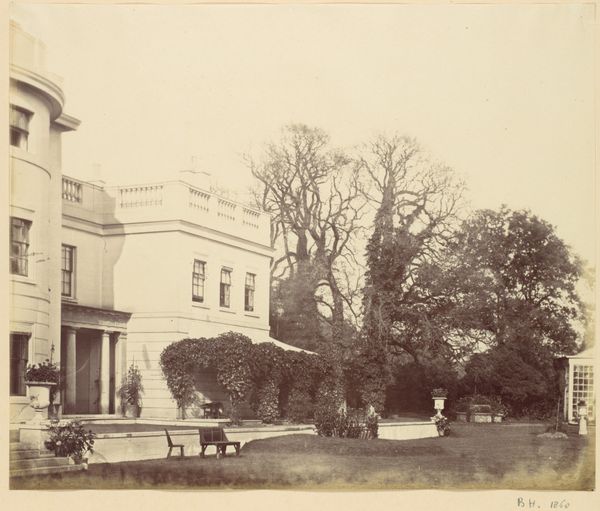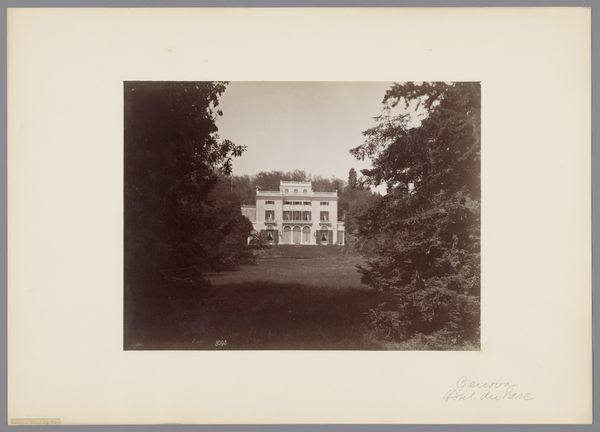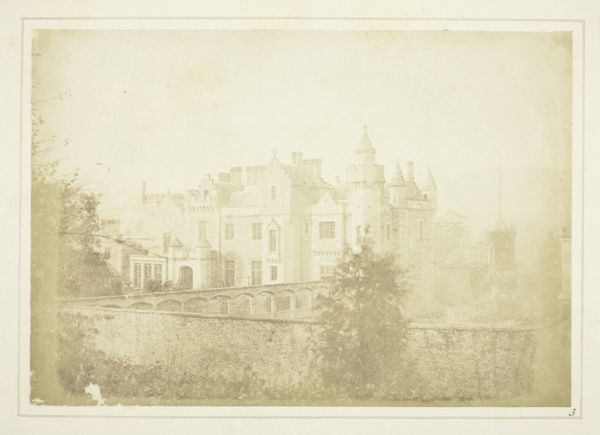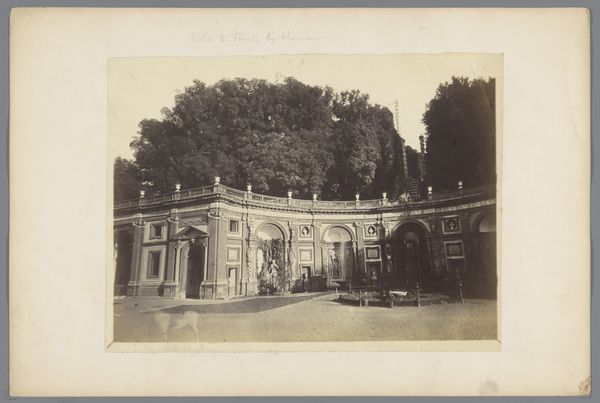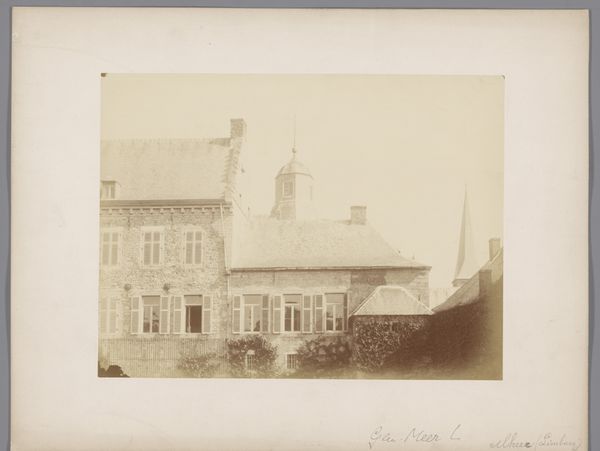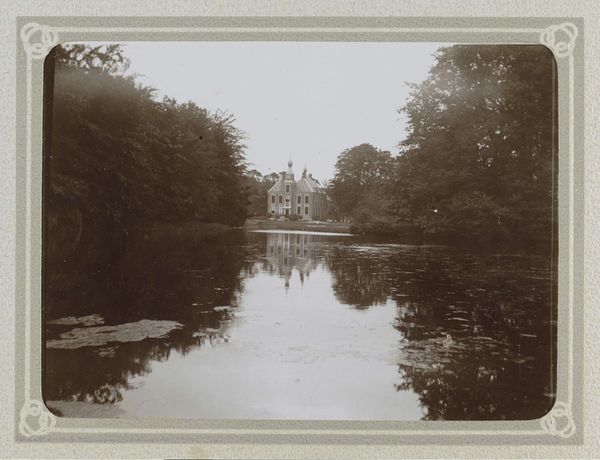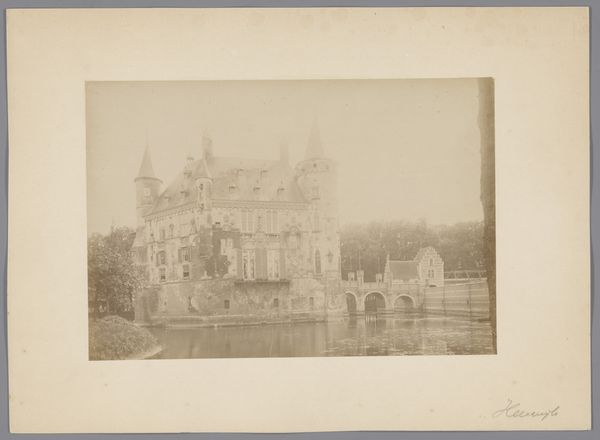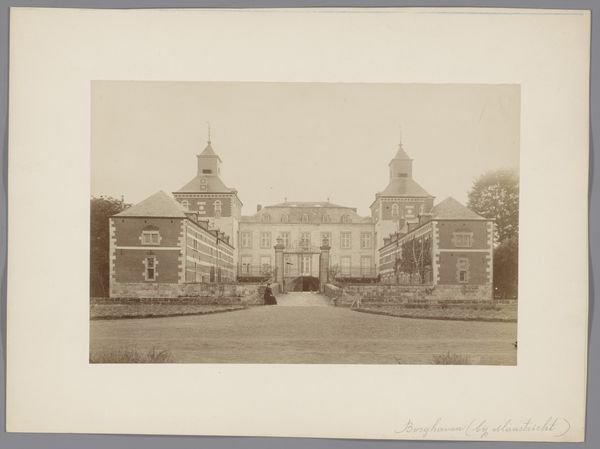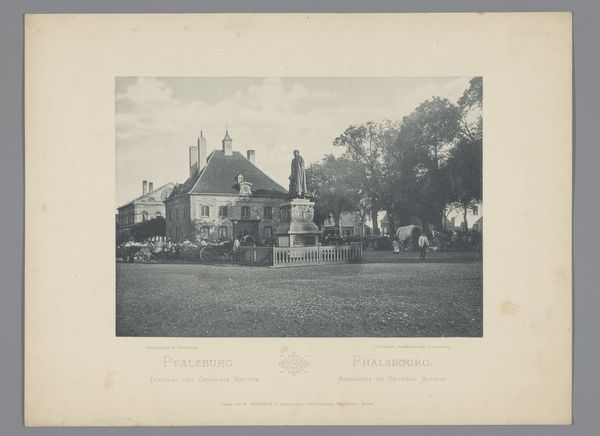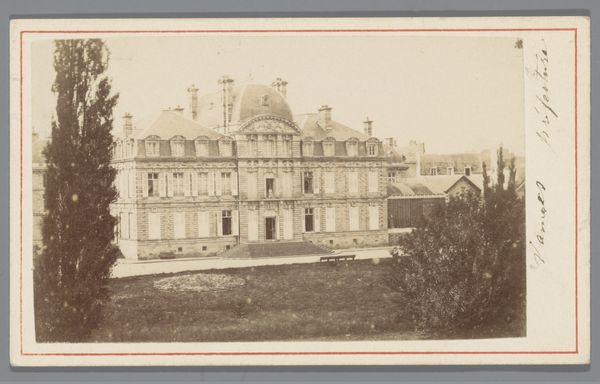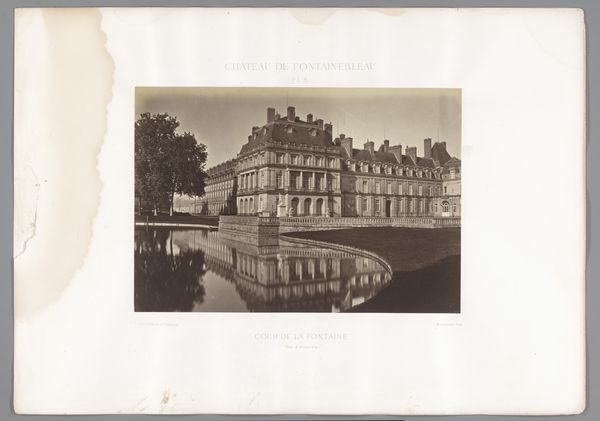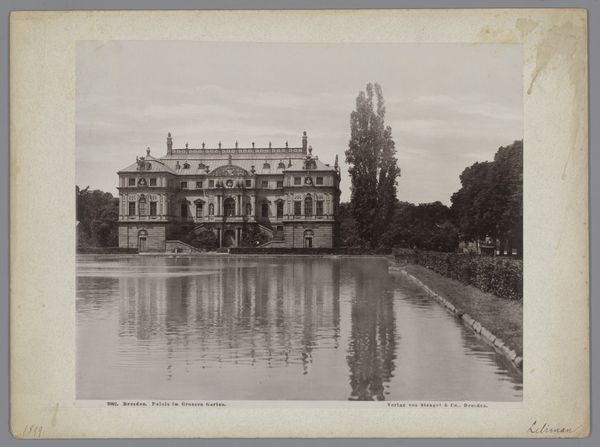
print, photography, albumen-print
# print
#
landscape
#
photography
#
cityscape
#
albumen-print
#
realism
Dimensions: height 225 mm, width 281 mm
Copyright: Rijks Museum: Open Domain
Curator: This albumen print, likely created between 1875 and 1900, offers a glimpse of Kasteel Biljoen in Velp through the lens of Johannes Gerardus Kramer. It's titled "Gezicht op Kasteel Biljoen te Velp." Editor: It strikes me as a photograph steeped in quietude, almost melancholic. The muted tones lend a sense of timelessness, while the castle’s reflection shimmering in the water doubles the architectural weight. Curator: Indeed. The photographic process of the time, coupled with Kramer's composition, positions the castle as a stately landmark within a rapidly industrializing Netherlands. These images played a role in solidifying a sense of national identity through the preservation of such historic locations. Editor: Do you think this idealized vision, deliberately framing the castle apart from broader societal issues, papers over socio-economic inequalities? Focusing on such grandeur might obscure the lives of those working on and around the estate, who, surely, were affected by industrial progress too. Curator: It’s a fair point. Landscapes like this can sanitize reality. However, we can still explore its significance. Photography became increasingly accessible, shifting documentation and allowing diverse hands in visual narratives. Think about the growing middle class being able to picture what aristocracy looked like. Editor: Access is key! Even with its aesthetic distance, one can acknowledge that photography democratized how we understand our place within class, race, and gender hierarchies. Its mass production allows it to engage people in discussions about how the story of “progress” often conveniently leaves people behind. It would be fruitful to examine how people of that time used or consumed pictures such as these to better assess their true implications in society. Curator: Absolutely. Thinking about context adds significant nuance. This image can offer both the aesthetic preservation of place and also, prompt critical investigations. Editor: Precisely! It invites us to examine representation itself and the inherent power structures embedded within. Perhaps we ought to consider not just what's pictured but what deliberately remains unseen.
Comments
No comments
Be the first to comment and join the conversation on the ultimate creative platform.

